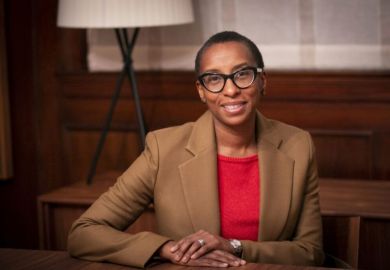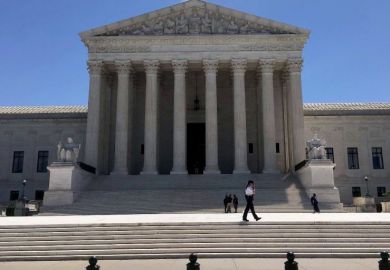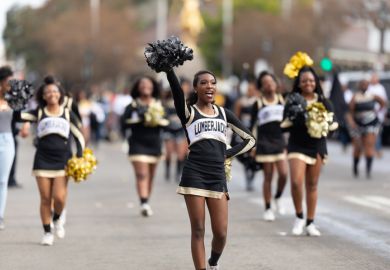The quickening Covid-era turnover in US college and university presidencies is creating leadership opportunities that, in a growing number of high-profile cases, are being seized by women.
The share of women leading the nation’s top research universities – the 146 ranked as R1 institutions – has jumped from 22 per cent to 30 per cent in less than two years, according to a tally by the Eos Foundation.
That’s a far more encouraging perspective than the one offered earlier this year by the main US higher education group, the American Council on Education, which compared 2022 numbers with those from 2017 and found only a slight gain in the share of female presidents over that longer time period.
The more recent gains for women, said the Eos Foundation’s president, Andrea Silbert, were likely to reflect a combination of factors at a moment when leadership vacancies were being created at an unusually high level in the aftermath of the pandemic.
Those factors, she said, included a growing awareness of gender inequalities arising from the MeToo movement of 2017, fuelled by Covid-era recognition of the need to create more inclusive and welcoming work environments.
And, as the number of women grew, Ms Silbert said, it was getting harder and harder for colleges and universities that had never had female leaders to explain themselves.
“It’s moving forward because the public is demanding it,” she said.
Yet the recent gender-related gains were not matched in most racial categories, according to data compiled by the Eos Foundation as part of its Women’s Power Gap Initiative. The share of black men holding R1 presidencies dropped from 7.3 per cent in September 2021 to 7 per cent in May 2023, while the share of black women barely budged, from 1.6 per cent to 2.1 per cent over that same period.
Beyond white men, only black men and Asian men hold presidencies of R1 institutions at percentages greater than their shares of the overall US population, the Eos Foundation said. Part of the problem, it said, stemmed from the fact that men were far more widely accepted from outside the traditional pathway of serving as provosts or academic deans before becoming university presidents. Only 74 per cent of men took that pathway, while 93 per cent of women did, the foundation said.
Institutions might also be eyeing separate gender-related and race-related targets, rather than setting “intersectional goals” that take into account women of non-white backgrounds, Ms Silbert said.
The American Council on Education said it saw much of the same dynamic. “It's harder for people of colour to advance across all sorts of areas in American life. That is a very unfortunate reality, and I don’t think colleges and universities escape that reality,” said Jonathan Fansmith, the ACE’s senior vice-president for government relations. “I think we probably do a whole lot better than most of society, but that doesn’t mean we’re doing as well as we should be.”
The ACE survey, carried out earlier this year, affirmed that presidential job openings are coming at an ever-faster rate. Its data, based on responses from more than 1,000 presidents, found they had been in their positions for an average of 5.9 years, part of a long-running decline in that figure from 8.5 years in ACE’s 2006 survey.
The Eos Foundation also looked at the governing boards of the 146 top institutions and found that only nine of them had a majority of women. And 76 per cent of the boards had fewer than 40 per cent female members, it said.
The wide divisions between the US colleges and universities that have made progress on diversity in their presidencies, and those that have not, might help drive forward the needed change, according to Ms Silbert. Close to half of the nation’s 146 top-ranked research universities have never had a female president. And while six of the eight Ivy League institutions now have women leaders, Yale University has never had one in its 300-plus years.
“There’s a significant reputational risk for universities that have never had a woman president,” Ms Silbert said. “They're realising ‘oh gee, I'm at the bottom; I'm not doing well’.”
Register to continue
Why register?
- Registration is free and only takes a moment
- Once registered, you can read 3 articles a month
- Sign up for our newsletter
Subscribe
Or subscribe for unlimited access to:
- Unlimited access to news, views, insights & reviews
- Digital editions
- Digital access to THE’s university and college rankings analysis
Already registered or a current subscriber?







